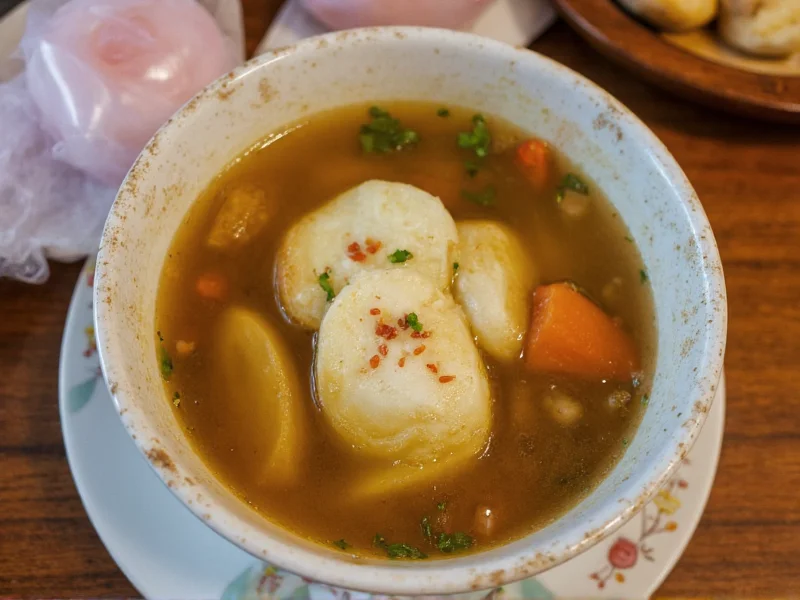When searching for a genuine Korean soup recipe, Kimchi Jjigae stands as the most beloved traditional option. This hearty stew transforms simple ingredients into a complex, deeply flavorful meal that's been warming Korean households for generations. Unlike many Western interpretations, authentic Kimchi Jjigae relies on properly aged kimchi as its flavor foundation, creating a distinctive tangy-spicy profile that defines this national favorite.
Why Kimchi Jjigae Represents the Best Korean Soup Recipe
Among all Korean soup recipes, Kimchi Jjigae holds special cultural significance as Korea's answer to comfort food. The magic happens when fermented kimchi breaks down during cooking, releasing lactic acids that create umami depth impossible to replicate with fresh ingredients. This transformation requires patience—properly aged kimchi (7-14 days old) delivers the complex sourness essential to authentic flavor.
Essential Ingredients for Authentic Korean Soup Recipe
Quality ingredients make or break your Korean soup recipe. Don't substitute key components:
| Ingredient | Quantity | Preparation Notes |
|---|---|---|
| Mature kimchi | 2 cups | 7-14 days aged, juice included |
| Pork belly | 8 oz | Thinly sliced against the grain |
| Firm tofu | 14 oz block | Cubed, pressed to remove excess water |
| Kimchi juice | ½ cup | From your kimchi container |
| Garlic | 5 cloves | Minced |
Step-by-Step Korean Soup Recipe Instructions
- Sauté pork belly in a heavy pot until fat renders (5 minutes). Remove excess fat, leaving 1 tablespoon.
- Add kimchi and garlic, stir-fry until kimchi softens and edges brown (8-10 minutes). This crucial step develops flavor depth.
- Pour in kimchi juice and water (4 cups), bring to gentle boil. Skim any foam that rises.
- Add gochugaru (Korean red pepper flakes) 2 tablespoons and soy sauce 1 tablespoon. Simmer 15 minutes.
- Stir in tofu and sliced onions. Cook 5 more minutes until tofu is heated through.
- Finish with green onions and a drizzle of sesame oil just before serving.
Professional Tips for Perfect Korean Soup Recipe
Master these techniques to elevate your Korean soup recipe:
- Kimchi selection matters: Use cabbage kimchi with visible lactic fermentation bubbles
- Don't rush the stir-fry: Properly caramelized kimchi creates the flavor foundation
- Adjust spice gradually: Add gochugaru in increments to control heat level
- Use anchovy-kelp broth instead of water for restaurant-quality depth
- Let it rest 5 minutes after cooking for flavors to meld
Authentic Variations of This Korean Soup Recipe
Traditional Korean cooking embraces adaptation while maintaining core principles:
- Kimchi Soondubu Jjigae: Add soft tofu and egg for silkier texture
- Vegetarian version: Substitute mushroom broth and omit pork
- Seafood Kimchi Jjigae: Add clams or shrimp during final simmer
- Extra-spicy version: Include gochujang (Korean chili paste) 1 tablespoon
Serving Authentic Korean Soup Recipe
Serve your Korean soup recipe properly for the complete experience:
- Use heavy stone or cast iron bowls to maintain temperature
- Accompany with steamed rice and banchan (side dishes)
- Provide Korean soup spoons (deep, long-handled)
- Offer additional gochugaru for customization
Storage and Reheating Instructions
This Korean soup recipe actually improves overnight as flavors develop:
- Cool completely before refrigerating (within 2 hours)
- Store in airtight container for up to 4 days
- Reheat gently on stove (not microwave) to preserve texture
- Freeze portions for up to 3 months (thaw overnight)
Common Questions About Korean Soup Recipe
These frequently asked questions address key concerns when preparing authentic Korean soups:











 浙公网安备
33010002000092号
浙公网安备
33010002000092号 浙B2-20120091-4
浙B2-20120091-4